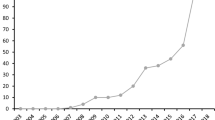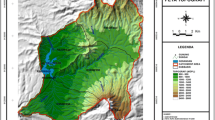Abstract
It is of great significance to study the trends and internal differences of eco-efficiency in the Yellow River Basin for ecological protection and high-quality development of the Yellow River Basin. According to the characteristics of the Yellow River Basin in China, the eco-efficiency evaluation system was constructed, and the super-efficiency slack-based measure (SBM) model and the super-efficiency SBM model of undesired output were used to calculate the eco-efficiency levels of provinces in the Yellow River Basin from 2005 to 2020, and the variation trend and internal differences were analyzed. The results show that when only the expected output was considered, the eco-efficiency of the Yellow River Basin as a whole and each province showed a fluctuating upward trend, but there were obvious differences. Qinghai Province, Sichuan Province, and Ningxia Autonomous Region had high eco-efficiency, while Shaanxi Province, Shanxi Province, and Inner Mongolia Autonomous Region had low eco-efficiency. Compared with only considering the expected outputs, eco-efficiency of Qinghai Province had improved significantly when considering non-expected outputs. The eco-efficiency of Shandong Province and Henan Province had improved significantly after 2016, while the eco-efficiency of the two provinces had decreased significantly before 2016. The eco-efficiency of Shaanxi, Shanxi, Inner Mongolia, Ningxia, and Gansu had declined to varying degrees. Finally, the reasons for the differences in eco-efficiency in various provinces in the Yellow River Basin were analyzed, and suggestions for improving the eco-efficiency of the Yellow River Basin were put forward.


Similar content being viewed by others
Data Availability
Not applicable
References
Araújo RV, Espejo RV et al (2021) Eco-efficiency measurement as an approach to improve the sustainable development of municipalities: a case study in the Midwest of Brazil. Environ Dev 39:100652. https://doi.org/10.1016/j.envdev.2021.100652
Deng X (2019) Study on evaluation of regional ecological efficiency-taking the Yangtze River economic belt as an example. Price Theory Pract 11:133–137. https://doi.org/10.19851/j.cnki.cn11-1010/f.2019.11.032
Fu LN (2013) Urban agglomerations eco-efficiency analysis based on super-efficiency DEA model: case study of Chang-Zhu-Tan “3 + 5” urban agglomeration. China Popul Resour Environ 23(4):169–175. https://doi.org/10.3969/j.issn.1002-2104.2013.04.027
Ge XC, Xu J et al (2021) Evaluation and dynamic evolution of eco-efficiency of resource-based cities-a case study of typical resource-based cities in China. Sustainability 13(12):6802–6802. https://doi.org/10.3390/su13126802
Gong WF, Qi XH et al (2022a) Influencing factors of total factor energy efficiency in Bohai Rim Region based on DEA-T obit model. Energy Eng 119(4):1663–1679. https://doi.org/10.32604/ee.2022.018886
Gong WF, Zhang HX et al (2022b) Analysis of urban carbon emission efficiency and influencing factors in the Yellow River Basin. Environ Sci Pollut Res 9:1–15. https://doi.org/10.1007/s11356-022-23065-x
Heidenreich A, Grovermann C et al (2022) Sustainable intensification pathways in Sub-Saharan Africa: assessing eco-efficiency of smallholder perennial cash crop production. Agric Syst 195:103304. https://doi.org/10.1016/j.agsy.2021.103304
Huang LF, Zhou ZT et al (2020) Evaluation of innovation ecological efficiency of the Yangtze River Economic Belt based on two-stage US-NSBM model. J Liaoning Univ Technol (Soc Sci Ed) 22(5):42–46. https://doi.org/10.15916/j.issn1674-327x.2020.05.012
He WH, Zhang GH (2021) Research on the strategies for building long-term mechanism of ecological coordination in the Yellow River Basin. J Party School CPC Zhengzhou Municipal Committee 6:40–45. https://doi.org/10.15875/j.cnki.zgzzswdxxb.2021.06.008
Liang JH, An ZL (2022) Measurement of agricultural ecological efficiency in Heilongjiang Province.CO-Operative. Econ Sci (9):27–29. https://doi.org/10.13665/j.cnki.hzjjykj.2022.09.073
Long LJ (2019) Measurement and evaluation of urban ecological well-being performance of 35 major cities in China based on PCA-DEA and Malmquist index method. Inq Econ Iss 2:69–79
Li LP, Tian CX et al (2022) Ecological efficiency - new environmental management experience of OECD. Environ Sci Trends 1:33–36. https://doi.org/10.19758/j.cnki.issn1673-288x.2000.01.009
Liao H, Zhu T (2002) Approach on development relationship between eco-economic efficiency and environmental management. Shanghai Environ Sci 21(7):4
Meng FL, Wang WP (2021) Heterogeneous effect of “Belt and Road” on the two-stage eco-efficiency in China’s provinces. Ecol Indic 129:107920. https://doi.org/10.1016/j.ecolind.2021.107920
Rebolledo-Leiva R, Angulo-Meza L et al (2021) A new method for eco-efficiency assessment using carbon footprint and network data envelopment analysis applied to a beekee** case study. Journal of Cleaner Production. J Clean Prod (329):129585. https://doi.org/10.1016/j.jclepro.2021.129585
Ren Y, Fang C, Li G (2020) Spatiotemporal characteristics and influential factors of eco-efficiency in Chinese prefecture-level cities: a spatial panel econometric analysis. J Clean Prod 260:120787. https://doi.org/10.1016/j.jclepro.2020.120787
Sheng WT, Hu QG et al (2020) Spatio-temporal evolution and spatial interaction of regional eco-efficiency in China. J Nat Resour 35(9):2149–2162. https://doi.org/10.31497/zrzyxb.20200909
Su H, Yang S (2022) Spatio-temporal urban land green use efficiency under carbon emission constraints in the Yellow River Basin, China. Int J Environ Res Public Health 19(19):12700. https://doi.org/10.3390/ijerph191912700
Tian P, Wang HH et al (2021) Eco-efficiency evaluation and influencing factors analysis of county-level cities in the East China Sea coastal zone. Geogr Res 40(8):2347–2366. https://doi.org/10.11821/dlyj020200810
Tone K (2001) A slacks-based measure of efficiency in data envelopment analysis. Eur J Oper Res 130(3):498–509. https://doi.org/10.1016/S0377-2217(99)00407-5
Tone K (2002) A slacks-based measure of super-efficiency in data envelopment analysis. Eur J Oper Res 143(01):32–41. https://doi.org/10.1016/S0377-2217(01)00324-1
Wang Y, Zhang ZW (2018) Discussion on enterprise accounting evaluation based on ecological efficiency. Rural Econ Sci Technol 29(15):178–180
Wang F, Fang YL (2021) Eco-efficiency measurement and evolution mechanism of tourism: a case study of provincial panel data in China. J Huaiyin Teachers College Nat Sci Ed 20(4):311–318. https://doi.org/10.16119/j.cnki.issn1671-6876.2021.04.005
Wu YR (2008) The role of productivity in China’s growth. New Estimates. China Econ Q 03:827–842
Xue D, Yue L, Ahmad F, Draz MU, Chandio AA, Ahmad M, Amin W (2022) Empirical investigation of urban land use efficiency and influencing factors of the Yellow River Basin Chinese cities. Land Use Policy 117:106117. https://doi.org/10.1016/j.landusepol.2022.106117
Zhao ZX, Yan YF et al (2022) The approach to achieving the “double carbon” goal in nine provinces and regions in the yellow River Basin. J **'an Jiaotong Univ Soc Sci 42(05):20–29. https://doi.org/10.15896/j.xjtuskxb.202205003
Zhang J, Wu GY, Zhang JP (2004) The Estimation of China's provincial capital stock: 1952-2000. Econ Res J 39 (10): 35–44
Zhang Y, Geng WL et al (2020) Dynamic changes, spatiotemporal differences and factors influencing the urban eco-efficiency in the lower reaches of the Yellow River. Int J Environ Res Public Health 17(20):19–35. https://doi.org/10.3390/ijerph17207510
Acknowledgements
This paper benefited from years of thinking about these issues and the discussion with many colleagues related to economics at that time. In particular, we would like to thank the chief editor of this journal and the anonymous reviewers for their helpful comments on future drafts.
Funding
The research is supported by the National Social Science Foundation of China under grant 22BJY174, the National Natural Science Foundation of China under grant 71804089, the Humanities and Social Sciences Youth Foundation, Ministry of Education of the People’s Republic of China under grants 18YJCZH034 and 19YJC790128, and the Graduate Education Quality Improvement Project of Shandong Province in China under grants SDYKC19180 and SDYAL19180.
Author information
Authors and Affiliations
Contributions
Chuanhui Wang: conceptualization, methodology, writing—original, and funding acquisition.
Weifeng Gong: writing—original, writing—review and editing, and project administration.
Mengzhen Zhao: methodology, writing—review and editing, and formal analysis.
Yuanlin Zhou: investigation and project administration.
Yu Zhao: investigation and formal analysis.
Corresponding author
Ethics declarations
Ethics approval and consent to participate
Not applicable
Consent for publication
Not applicable
Competing interests
The authors declare no competing interests.
Additional information
Responsible Editor: Ilhan Ozturk
Publisher’s note
Springer Nature remains neutral with regard to jurisdictional claims in published maps and institutional affiliations.
Rights and permissions
Springer Nature or its licensor (e.g. a society or other partner) holds exclusive rights to this article under a publishing agreement with the author(s) or other rightsholder(s); author self-archiving of the accepted manuscript version of this article is solely governed by the terms of such publishing agreement and applicable law.
About this article
Cite this article
Wang, C., Gong, W., Zhao, M. et al. Spatio-temporal evolution characteristics of eco-efficiency in the Yellow River Basin of China based on the super-efficient SBM model. Environ Sci Pollut Res 30, 72236–72247 (2023). https://doi.org/10.1007/s11356-023-27363-w
Received:
Accepted:
Published:
Issue Date:
DOI: https://doi.org/10.1007/s11356-023-27363-w




